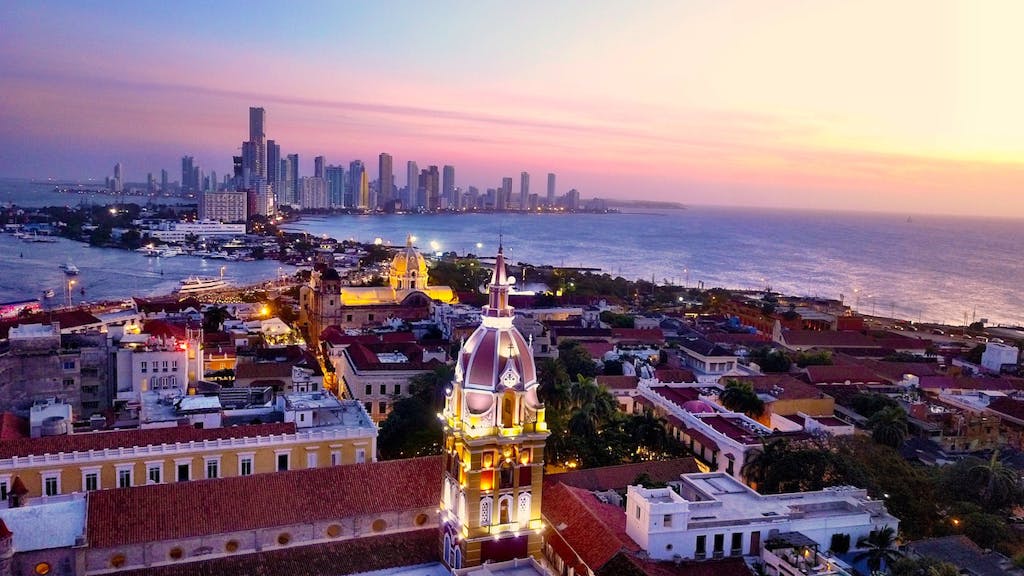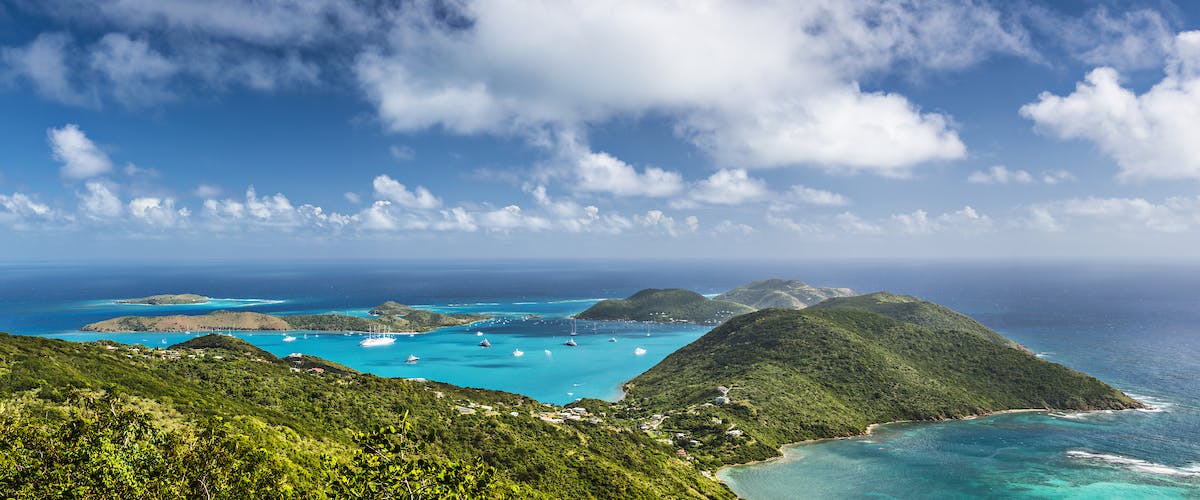How to Choose your Cruise: Caribbean and Central America
Indolent hideaways undiscovered by the masses. Unusual ports where the oft-told sagas of Colonial conquest have encountered today’s story of remembrance and reconciliation. Dream beaches where calm, crystalline water laps at loamy sands and palm trees arc overhead to provide a lattice of shade, a breeze shimmying across bare skin, lulling me to slumber.
As I unfolded a map to canvass the panoply of Caribbean landings that Silversea Cruises calls upon, I was struck by the sheer enormity of cultures, history, scenery and activities the sea calls upon us to discover.
But, to recycle a tired cliché, there are so many islands, so little time. Where does one start? Not all Caribbean and Central American cruises are created equal. Want to know which itinerary best fits your travel style? Read on for everything you absolutely need to know about the Caribbean and Central America, island by island and port by port.
Ports of the Eastern Caribbean
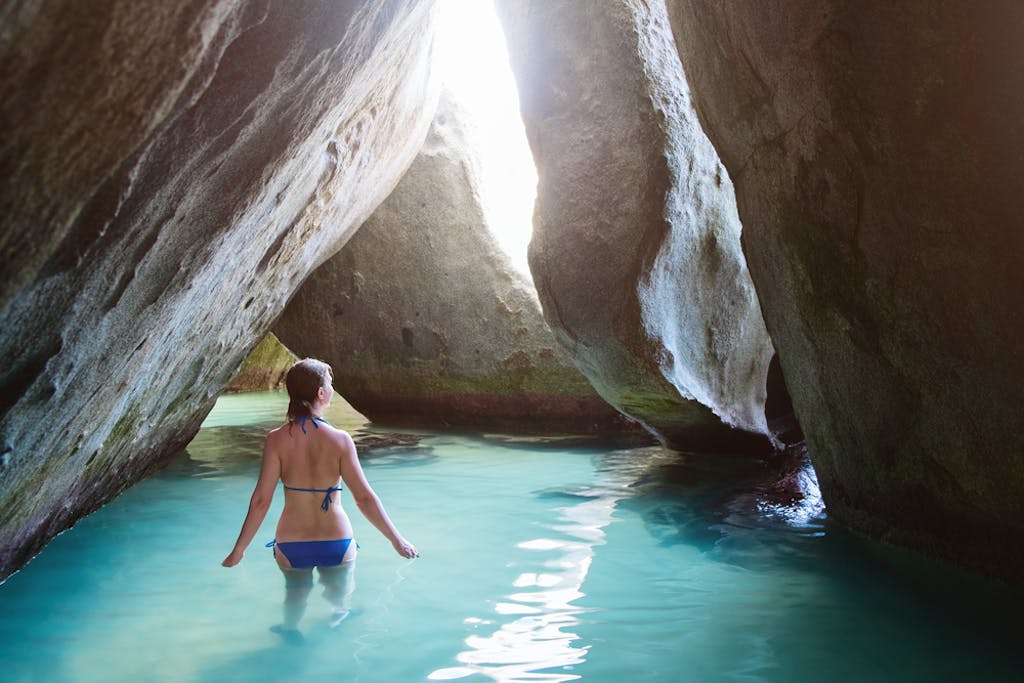
The Lesser Antilles of the Caribbean — a long, mostly volcanic arc — stretches from the Virgin Islands down to Trinidad. Every morning finds a new port, with each destination small enough to be explored end to end. For the most part, these islands are steep and green, the air scented with humidity and spices.
Starting from the north end of this chain of pearls, the Virgin Islands, where Danes left their only mark on the region in what is now a U.S. territory, St. Thomas has long served as one of the region’s most popular cruise ports. The architecturally appealing capital, Charlotte Amalie, boasts an outstanding natural harbor engulfed by muscular mountains, and the Danish history comes alive in evocative passageways paved with cobblestone. Duty-free shopping is a central lure, but don’t overlook the fine beaches curling into coves on the north coast of the island. Consider a day trip over to exquisite St. John, just two miles away, where the Virgin Islands National Park encompasses two thirds of the handsomely forested island.
An invisible dividing line separates the U.S. Virgins from the British, but it is another, more obvious line that defines the British Overseas Territory. That would be the Sir Francis Drake Channel, a time-honored sailing passage that cuts through the British Virgin Islands. Located at its center, 10-square-mile Tortola is the hub of the 50-some islands, defined by a spindly collection of lumps that rise to resplendent vistas and curves that collect sand into beautiful coves. It’s an island worth packing a beach bag for, and perhaps setting out on an independent expedition to one of the untrammeled north coast beaches, like Smuggler’s Cove or Trunk Bay.
Virgin Gorda, the second-largest of the BVI chain, sees few cruise ships, but that means you’ll probably have one of the seductive white-sand coves all to yourself. Don’t miss The Baths, an iconic scene-stealer. It’s a jumble of giant boulders lumped along the sand, with a vague path through the rocks leading to a heavenly cove called — ironically enough — Devil’s Bay. Jost Van Dyke is one of the smaller islands in the BVIs, a backwater with just a few hundred residents and beach bars galore. Legend has it the Painkiller cocktail was invented here, and they go down oh-so-easily while bobbing in the water of gorgeous White Bay.
Another archipelago of sorts is found just south of the Virgins, where five islands fly three different flags. At the center, St. Maarten alone uses two flags — Dutch on one half, where the capital of Philipsburg serves as cruise ship port, and the French tricolore on the St. Martin side. Spindly, supine Anguilla is another British Oversea Territory, lined with more fine beaches per square mile than perhaps any place on Earth, while tiny Saba and St. Eustatius loll on the horizon south of the port.
For those lucky enough to call on St. Barthélemy, nicknamed St. Barts, you’ll anchor outside the chic harbor of Gustavia, where mega-yachts pull in for a see-and-be scene and celebrities, moguls and executives arrive by (small) plane-load, 20 at a time. They spend their days posing on exquisite beaches, their afternoons at Gustavia’s boutiques of Bvlgari, Cartier and Dior, and their evenings take in the Caribbean’s most polished cuisine.
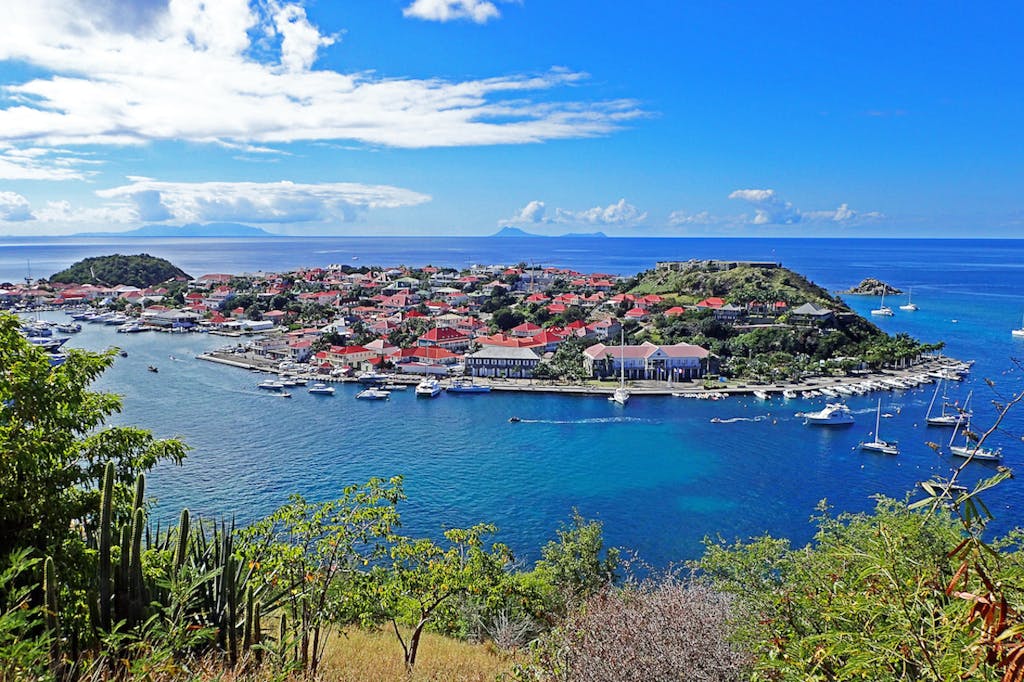
The French Caribbean continues to the south, and Martinique carries a Hollywood-style cache most islands can only dream of — it is, after all, where Bogie seduced Bacall while assisting the French underground in To Have and Have Not. Today, the confluence of France and the West Indies produces a sensual environment — boutiques stock Parisian fashions, patisseries brim with robust cheese from the mainland, while the island’s distinct musical and dance traditions percolate in the background.
Shaped like a butterfly, Guadeloupe has two distinct wings separated by a narrow sea channel. Grand-Terre, the coralline eastern wing, is made up of gently rolling hills and rolling fields of sugar cane. The western wing, Basse-Terre, has a mountainous demeanor that climaxes at the highest point in the Eastern Caribbean, a dormant volcano named La Soufriere. Sparkling on the horizon immediately south of Basse-Terre is Les Saintes, a diminutive, eight-blip archipelago that possess — perhaps — a bit of the innocence and backwater appeal of St. Barts a few decades ago. The mostly Bretan fisherfolk — about 3,500 residents in all — are outnumbered by bleating goats. Be sure to invest in a clutch of handmade tourment d’amour, delicious, salty-sweet coconut tarts sold by women in madras at the port (and note, those goats can spot the tarts from a mile away!).
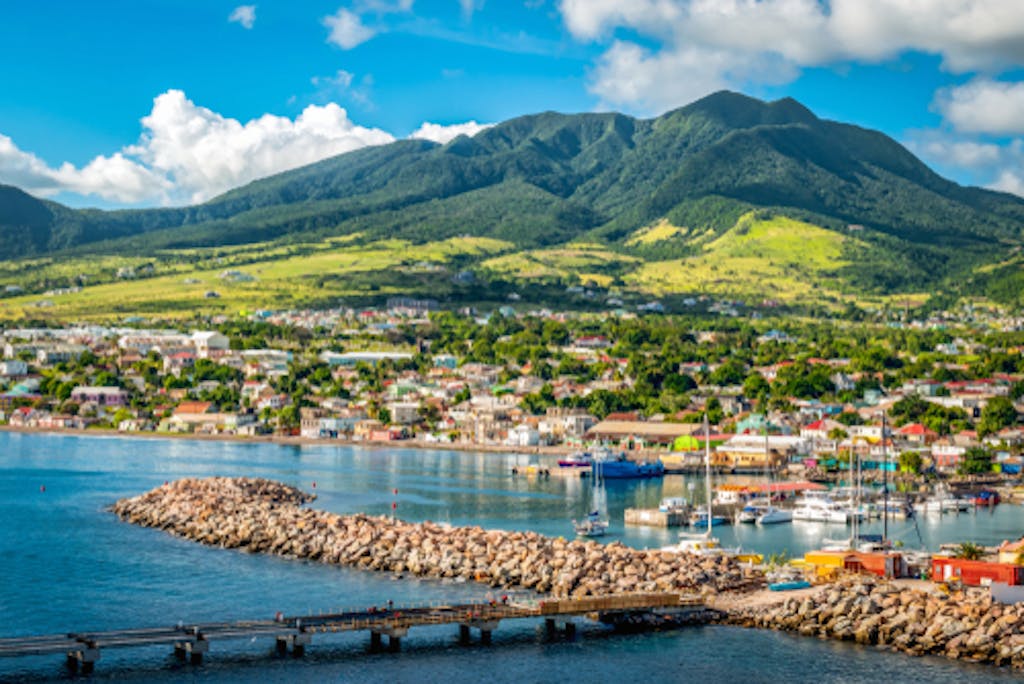
Compact, yet surprisingly diverse, St. Kitts possesses some of the Caribbean’s richest scenery — a majestic volcano robed in writhing fields of (now) wild sugar cane and a narrow peninsula with white sand coves tucked between rocky outcrops. In the distance: the sister island of Nevis, shaped like a Hershey’s Kiss afloat on the swelling sea. Adventurous visitors can embark on horseback tours, rainforest excursions, or a hike to the mist-swirled crater of St. Kitts’ Mt. Liamuiga. Other options include a ride on the St. Kitts Scenic Railway that travels through abandoned sugar estates to circuit the island, or a visit to Brimstone Hill, a carefully preserved, UNESCO World Heritage-listed fort, nicknamed the Gibraltar of the Caribbean.
Rich with British naval history, luminous beaches, and all the watersports you might want, Antigua’s scalloped coastline is one of the Caribbean’s most striking. The local tourist board claims 365 beaches, one for every day of the year. Sure, it’s more marketing whiz-bang than reality, but there are indeed more silky white strands than one could possibly visit in even a week. Between beach diversions, well worth a visit is another UNESCO site: Nelson’s Dockyard, where Admiral Nelson careened ships of the British navy during the 18th-century tug-of-war with the French over their Atlantic possessions.

The “Emerald Isle,” Montserrat is another of the British Overseas Territories, and one with a link to Ireland that goes beyond its rolling green hills. Many residents can trace ancestry to the Irish indentured servants that were among the first White settlers. The use of the Irish language was common until the 20th century, and Montserrat still celebrates St. Patrick’s Day today. The small island is famous for another event: the eruption of its volcano, which began in 1995 and eventually turned the former capital of Plymouth into a modern-day Pompeii. The southern half of the island remains off-limits as the volcano goes back to sleep, but tours of the one-time capital are eye-opening.
The Caribs who first resided in Dominica called it Wai‘tu kubuli, which translates to “Tall is her body.” Truer words were never uttered to describe one of the region’s most dramatic profiles, one where walls of green climb to cloud-wrapped aeries. As another of the more active volcanic outposts, you’ll trade white sand beaches for black, but the self-proclaimed nature island has a national park that is World Heritage listed for sheltering the “richest biodiversity in the Caribbean,” with mist-shrouded elfin woodlands, two endemic parrots, and crater lakes — cold or boiling, take your pick. The natural attractions extend offshore to a rich marine landscape favored by humpback and other whales, and divers and snorkelers.
St. Lucia and Grenada are members of the British Commonwealth, having achieved independence in the 1970s. While both islands remain heavily dependent on tourism, agriculture still provides a backdrop, especially in Grenada, which is nicknamed the Spice Island. Nutmeg and mace are the principle exports, but cocoa is grown and the organic chocolate produced in Grenada is an award-winner at competitions. In St. Lucia, a drive down the leeward coast climbs into the rainforest, eventually reaching the resplendent Pitons, prodigious spires that vault heavenward from the town of Soufriere, so named for its volcanic springs.
The Grenadines, an archipelago that unfurls off St. Vincent like the tassels ornamenting a kite, is another set of idyllic landings. While many of the 60-or-so islets are uninhabited, Bequia — pronounced beck-way — has about 6,000 residents, and they cling proudly to a maritime heritage. Bucolic Port Elizabeth is where you’ll tender in, and the pace of life feels determined by the ebb and flow of ferries and yachties. A pair of fine beaches, Lower Bay and Princess Margaret (named for one visitor), unfurl just south of town, easily reached by road and water taxis.

Trinidad and Tobago are the separated-at-birth siblings sitting at the bottom of the Eastern Caribbean chain. While Trinidad is known mainly for its raucous Carnival celebration, the island warrants more than a cursory glance — it’s the region’s most racially dynamic, with the traditions of a large East Indian population, such as Hindu temples and idols, contrasting with African rooted Carnival and calypso. Highly recommended: the Asa Wright Nature Centre, a lodge where the island’s amazing birdlife can be observed up close.
Densely populated Trinidad is the pair’s bustling center of commerce and trade, while Tobago is where the Trinis go to relax and laze on glorious beaches. This is a place for exploring treasures of the offshore reefs and the Western Hemisphere’s oldest forest reserve. It shelters the region’s richest variety of birdlife, which has more in common with nearby Venezuela than the islands to the north.
Most of Silversea’s itineraries start from either end of the Eastern Caribbean, and Barbados marks the region’s most irrefutable link to the spirit of England. A cordial disposition thrives, reflected in the afternoon tea served at glam resorts, while Bajans — as islanders here refer to themselves — maintain a passion for cricket and polo. Toss in miles of velvety white sand beaches, a flourishing restaurant scene, several of the Caribbean’s finest golf courses, and an array of museums and sightseeing opportunities and the island is revealed as one of the region’s most well-rounded objectives, worthy of deeper exploration.
San Juan, Puerto Rico is the oldest city flying the stars and stripes, and a city that is easily accessed from a variety of major U.S. airports. The island is well-worth allowing a night or two ahead of embarkation for exploration. In this city of two million you’ll find skyscrapers and surf, museums and nightlife, set against a backdrop of five centuries of Spanish history. Cobblestone streets connect the forts and monuments curling around Old San Juan, a peninsular outcrop settled by the Spanish Empire in 1508 — it’s lively and walkable with plentiful shopping and dining options. Blue cobblestone streets lead up the hill to two forts, El Morro and San Cristobal, managed by the National Park Service. A lovely walk leads from the enormous San Juan Gate along the water below the imposing walls that encircle the old city.
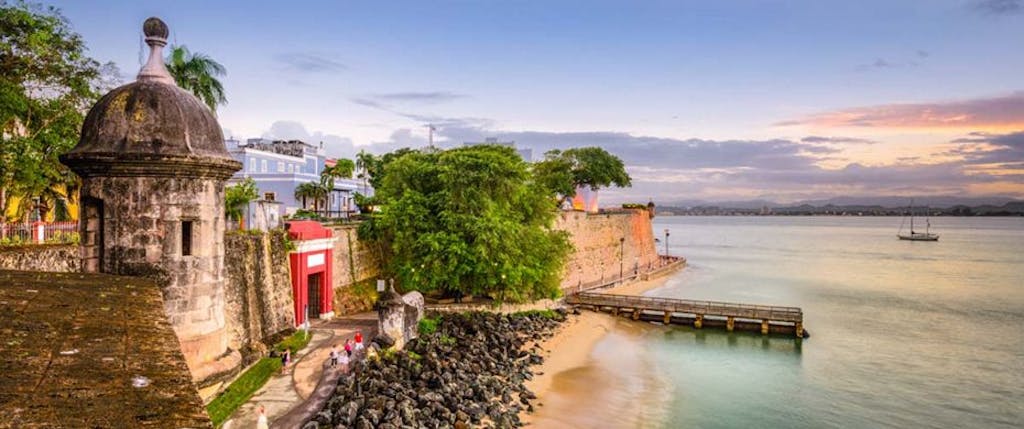
The Western Caribbean’s Ports
Stars of the Western Caribbean include the sun-drenched “ABC islands” that line the southern boundary of the Caribbean Sea, just off South America. Aruba, part of the Kingdom of the Netherlands, sits just 18 miles off the coast of Venezuela. While the windswept, cactus-fringed island lacks typical visual attributes we associate with the Caribbean, the recumbent island delivers an undiluted dose of sun, sea and sand. Focus for all of these is the west coast, where bustling Palm Beach and quieter Eagle Beach lay on the resort diversions. Or visit an awesome relic of WWII history, the Antilla, a 400-foot German freighter that was scuttled in 1940 just off Palm Beach, reached by snorkel and dive boats daily.
Nearby Bonaire is one of the tops spots in the world for undersea exploration. The pristine reefs, abundant sea life and superb visibility make the island a must for anyone seeking the underwater world, and the calm water makes for surprisingly easy access. But topside, the rocky landscape offers other sights worth discovering, including a national park bisected by hiking trails, landscapes of parrot-infested cactus and flamingo ponds, and salt pans flanked by towering pyramids of blinding white crystals.
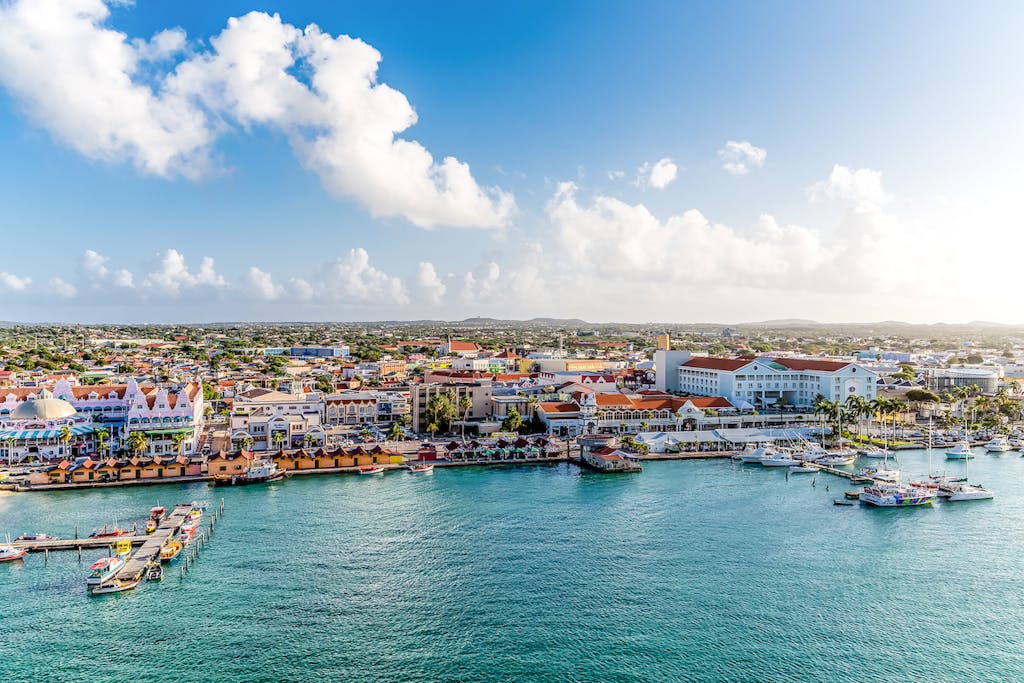
Next door, snorkeling and diving are mainstays of Curaçao as well, another outpost of the Dutch Caribbean. The island’s capital, Willemstad was named a UNESCO World Heritage Site for its multicultural history and distinctly Dutch architecture. The city is also home to Museum Kura Hulanda, which I rank as one of the top historical facilities in the Caribbean, dedicated to the slave trade (the island was one of the region’s three principle hubs for the slave network).
Almost all ships calling on the island of Jamaica tie up in Montego Bay — which, truth be told, doesn’t always put the best foot forward for the land of rum and reggae. Instead, Silversea opts for Port Antonio, the most lush and idyllic corner of the island. It was here, at Boston Bay, that jerk-cooked meats were first conceived; that Errol Flynn joined island girls on bamboo banana boats and inspired one of the Caribbean’s most pleasurable activities; and where comely beaches like Winifred and Long Bay recall the laid-back and rustic Negril of the 1970s. In short, remote and sleepy Port Antonio offers a more authentic slice of Jamaican culture, making it one of my favorite landings in all the Caribbean.
From here we move into the Latin-American Caribbean — starting with Cozumel, one of the region’s busiest cruise destinations. The Mexican island, located 35 miles south of Cancun, lays on the sand and sea, along with some of the region’s finest undersea sights. A two- to four-knot current provides exciting drift dives for the scuba set while Chankanaab Park will tantalize beginning snorkelers. There are small Mayan ruins on Cozumel, or if you’ve been to the island previously you might sign up for a trip to the breathtaking ruins of Chichen Itzá or Tulum, both set on the Yucatan mainland and reached by ferry and coach.
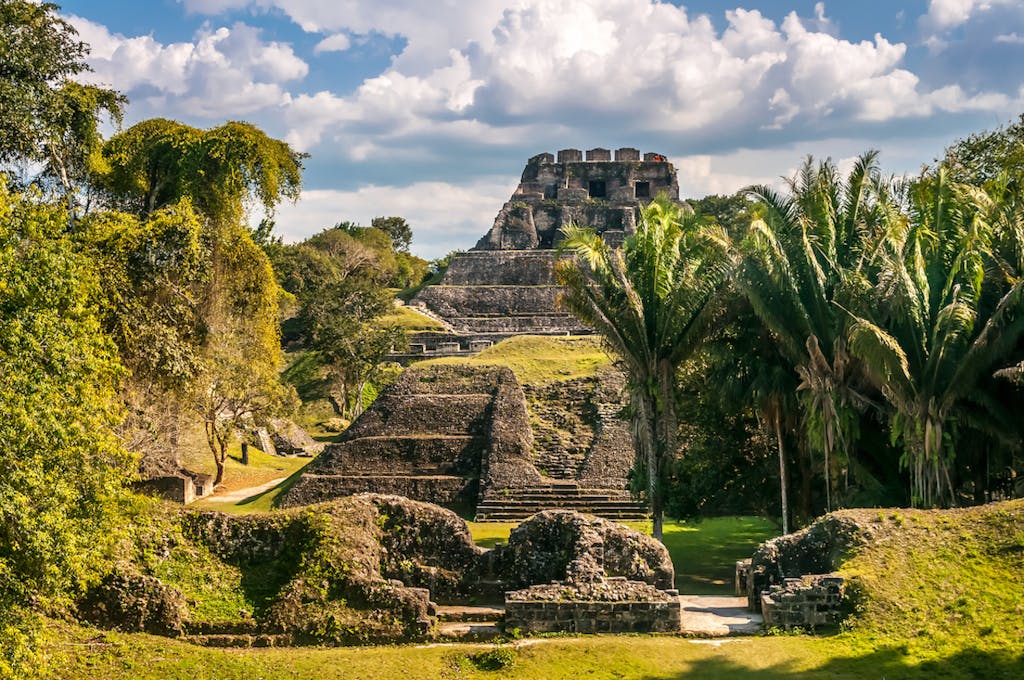
The Mesoamerican Reef sitting just offshore from Belize City, represents the second largest coral reef system in the world. Still, I continue to be seduced by the country’s alluring interior. There are Mayan ruins to see at Lamanai and Xunantunich, tubing trips on rivers that navigate caves and jungle wildlife, and the small but swell Belize Zoo, which is largely inhabited by rescue animals, including rare jungle cats — all of which are feasible daytrips from the port.

Roatán, largest of the Bay Islands, is Honduras’ beloved dive destination, but you’ll also have beach options like Big French Key and West Bay, and the Carambola Botanical Gardens, which offers easy trails to viewpoints and a cliff inhabited by iguanas and parrots. Or sign up for an excursion to Punta Gorda, where traditional dance of the Garifuna—descendants of African people who settled here in 1797—is celebrated alongside drums and yucca snacks. On calls to Roatan on Silver Moon, Silver Dawn and Silver Nova, travelers can go ashore and indulge in a culinary-focused S.A.L.T. experience.
Costa Rica — the “rich coast,” as it was named by Christopher Columbus on his last voyage to the Americas — was not a place for mineral wealth, as the explorer anticipated. But perhaps the lack of mining opportunities saved this Central American nation from exploitation, and the country’s ecotourism bonafides are showcased in Puerto Limon, the only port on the long Caribbean coastline. The town itself is not the attraction, but nearby are jungle rivers suitable for rafting, rainforests navigated by ziplines and aerial trams, and a rescue center that is home to displaced iguanas, howler monkeys and sloths. While much of Colombia was off-limits to all but the most adventurous tourist until a couple decades ago, Cartagena has served as the country’s welcoming Caribbean face all along. The magnificent walled city, a UNESCO World Heritage Site, was a vital port for goods traveling from the silver mines of Peru to Europe. Today, Cartagena is one of South America’s most modern cities, but the history and culture is always close by — from touring the old Colonial heritage by horse carriage to navigating the love stories of Nobel Prize Winner Gabriel Garcia Marquez, both real and imagined.
